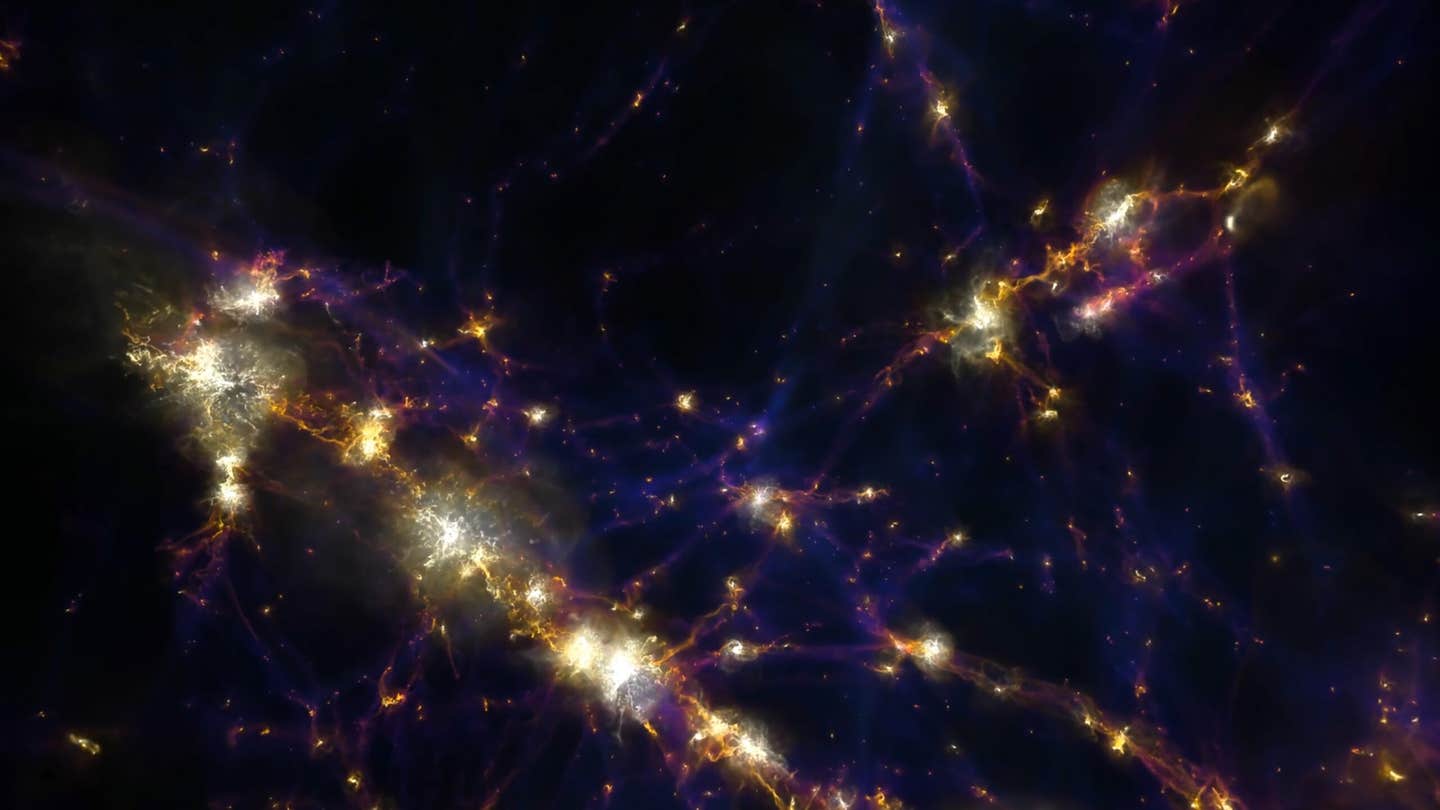‘Identical twin’ universes created using the world’s biggest supercomputer
Astronomers have conducted the most extensive ‘supercomputer’ simulations, traversing the expanse of time from the Big Bang to the present

[Oct. 27, 2023: Staff Writer, The Brighter Side of News]
Astronomers have conducted the most extensive 'supercomputer' simulations, traversing the expanse of time from the Big Bang to the present. (CREDIT: Creative Commons)
In a major leap forward in astrophysics, astronomers have conducted the most extensive 'supercomputer' simulations, traversing the expanse of time from the Big Bang up to the present, to shed light on some of the universe's most perplexing conundrums.
Named 'Flamingo,' the monumental project sought to reconcile the disparities between the digital representation of the universe and the empirical data we have amassed, especially the recent findings obtained from advanced telescopes which occasionally diverge from established predictions.
Such endeavors probe the very essence of our understanding of the cosmos, assessing the viability of the Standard Model of Cosmology as an accurate reflection of reality.
Delving deep into the intricacies of the universe, Flamingo meticulously rendered the progression of every constituent – from ordinary matter and enigmatic dark matter to the even more elusive dark energy – all governed by the immutable laws of physics. As these simulations advanced, intricate formations of galaxies and their clusters evolved in digital clarity.
Related Stories
Such simulations assume paramount importance as state-of-the-art facilities like the recently unveiled Euclid Space Telescope by the European Space Agency (ESA) and NASA's James Webb Space Telescope continually gather intricate data on galaxies, quasars, and stars.
"Cosmology is at a crossroads," declared Professor Carlos Frenk, a key figure in the Flamingo research collaboration from Durham University. He elucidated the challenge: "We have amazing new data from powerful telescopes some of which do not, at first sight, conform to our theoretical expectations. Either the standard model of cosmology is flawed or there are subtle biases in the observational data. Our super precise simulations of the universe should be able to tell us the answer."
Historically, cosmological simulations juxtaposed with empirical universe observations concentrated primarily on cold dark matter, long regarded as a pivotal component in the cosmic structure.
However, the scientific community is now acknowledging the indelible influence of ordinary matter, which intriguingly constitutes a mere 16% of the universe's total matter (encompassing our very planet and its inhabitants) and neutrinos. These subatomic particles, known for their elusive nature, barely interact with regular matter, yet hold the key to deciphering the evolutionary trajectory of the universe.
This groundbreaking venture witnessed simulations in operation for two years, harnessing the staggering power of the supercomputer housed in Durham. Clocking in over 50 million processor hours, the computations took place on the 'Cosmology Machine' (COSMA 8), a marvel managed by the Institute for Computational Cosmology, Durham University. This feat was executed under the aegis of the UK's DiRAC High-Performance Computing facility.
A projection through a 40 Mpc thick slice through the fiducial, intermediate-resolution simulation with box side length 2.8 Gpc (run L2p8_m9 in Table 2) at z = 0. The luminosity of the background image gives the CDM surface density whilst the colour encodes the surface density of massive neutrinos, both on a logarithmic scale. (CREDIT: Monthly Notices of the Royal Astronomical Society)
Flamingo, an initiative of the Virgo Consortium for cosmological supercomputer simulations, is aptly acronymized to signify 'full-hydro large-scale structure simulations with all-sky mapping for the interpretation of next generation observations.'
This pivotal research, a testament to global collaboration, received generous financial backing from esteemed institutions such as the European Research Council, the UK's Science and Technology Facilities Council, the Netherlands Organisation for Scientific Research, and the Swiss National Science Foundation.
Comparison of the CDM (left-hand panel) and neutrino (right-hand panel) surface density in a 20 Mpc thick slice through the z = 0 snapshot of the L2p8_m9 simulation. (CREDIT: Monthly Notices of the Royal Astronomical Society)
For enthusiasts and scholars alike, the findings of this ambitious project have been meticulously documented and are now available for perusal in the revered Monthly Notices of the Royal Astronomical Society journal.
With Flamingo's revelations poised to recalibrate our understanding of the cosmos, the world keenly awaits the next chapter in this intriguing interplay of theory and observation, as we inch closer to unravelling the universe's grand tapestry.
For more science and technology news stories check out our New Innovations section at The Brighter Side of News.
Note: Materials provided above by The Brighter Side of News. Content may be edited for style and length.
Like these kind of feel good stories? Get the Brighter Side of News' newsletter.



